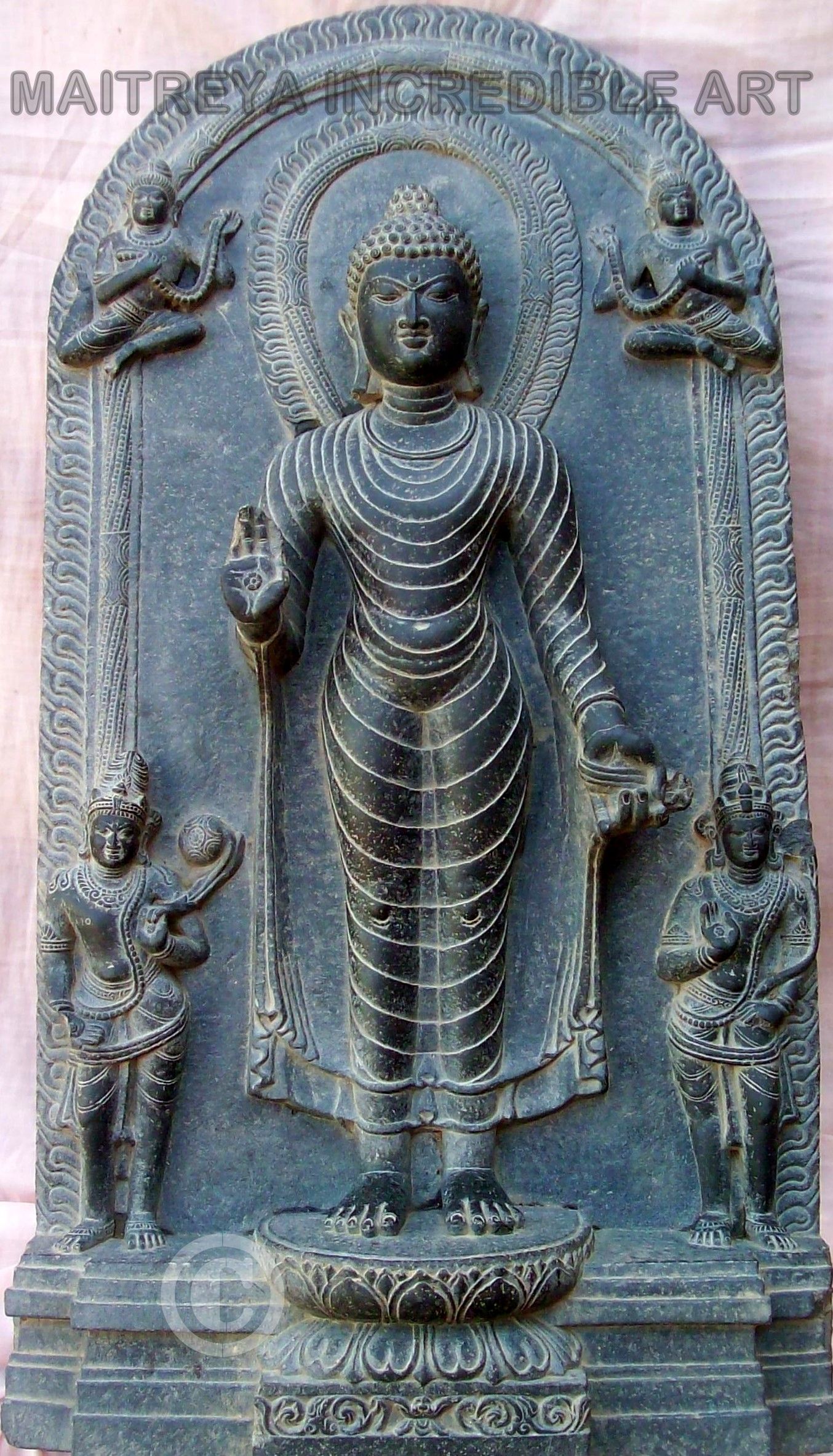BIHAR BUDDHA IN
PALA ART

SIZE AND PRICE ON REQUEST
MATERIAL :BLACK BASALT(KASUTI
STONE)
Buddha means "awakened one" or "the enlightened one." "Buddha" is also used as a title for the first awakened being in an era. In most Buddhist traditions, Siddhartha Gautama is regarded as the Supreme Buddha (P.sammāsambuddha, S. samyaksaṃbuddha) of our age, Gautama Buddha may also be referred to as Shakyamuni Buddha, Śākyamuni or "The Awakened One of the Shakya Clan."
Gautama is the primary figure in Buddhism, and accounts of his life, discourses, and monastic rules are believed by Buddhists to have been summarized after his death and memorized by his followers. Various collections of teachings attributed to him were passed down by oral tradition, and first commi
Buddha was born in a royal Hindu family to King Śuddhodana, the leader of Shakya clan, whose capital was Kapilavastu, and who were later annexed by the growing Kingdom of Kosala during the Buddha's lifetime. Gautama was the family name. His mother, Queen Maha Maya (Māyādevī) and Suddhodana's wife, was aKoliyan princess. Legend has it that, on the night Siddhartha was conceived, Queen Maya dreamt that a white elephant with six white tusks entered her right side,and tenmonths later Siddhartha was born. As was the Shakya tradition, when his mother Queen Maya became pregnant, she left Kapilvastu for her father's kingdom to give birth. However, her son is said to have been born on the way, at Lumbini, in a garden beneath a sal tree.
The day of the Buddha's birth is widely celebrated in Theravada countries as Vesak. Buddha's birth anniversary holiday is called "Buddha Poornima" in India as Buddha is believed to have been born on a full moon day. Various sources hold that the Buddha's mother died at his birth, a few days or seven days later. The infant was given the name Siddhartha (Pāli: Siddhattha), meaning "he who achieves his aim". During the birth celebrations, the hermit seer Asita journeyed from his mountain abode and announced that the child would either become a great king (chakravartin) or a great holy man. By traditional account,[which?] this occurred after Siddhartha placed his feet in Asita's hair and Asita examined the birthmarks. Suddhodana held a naming ceremony on the fifth day, and invited eight brahmin scholars to read the future. All gave a dual prediction that the baby would either become a great king or a great holy man. Kaundinya (Pali: Kondañña), the youngest, and later to be the first arahant other than the Buddha, was reputed to be the only one who unequivocally predicted that Siddhartha would become a Buddha.
tted to writing about 400 years later.
Some of the fundamentals of the teachings attributed to Gautama Buddha are:
Hinduism, Gautama is regarded as one of the ten avatars of God Vishnu. The Buddha is also regarded as a prophet by the Ahmadiyyas and a Manifestation of God in the Bahá'í faith. Some early Chinese Taoist-Buddhists thought the Buddha to be a reincarnation of Lao Tzu.
The Christian Saint Josaphat is based on the life of the Buddha. The name comes from the Sanskrit Bodhisatva via Arabic Būdhasaf and Georgian Iodasaph . The only story in which St. Josaphat appears, Barlaam and Josaphat, is based on the life of the Buddha. Josaphat was included in earlier editions of the Roman Martyrology (feast day 27 November) — though not in the Roman Missal — and in the Eastern Orthodox Church liturgical calendar (26 August).